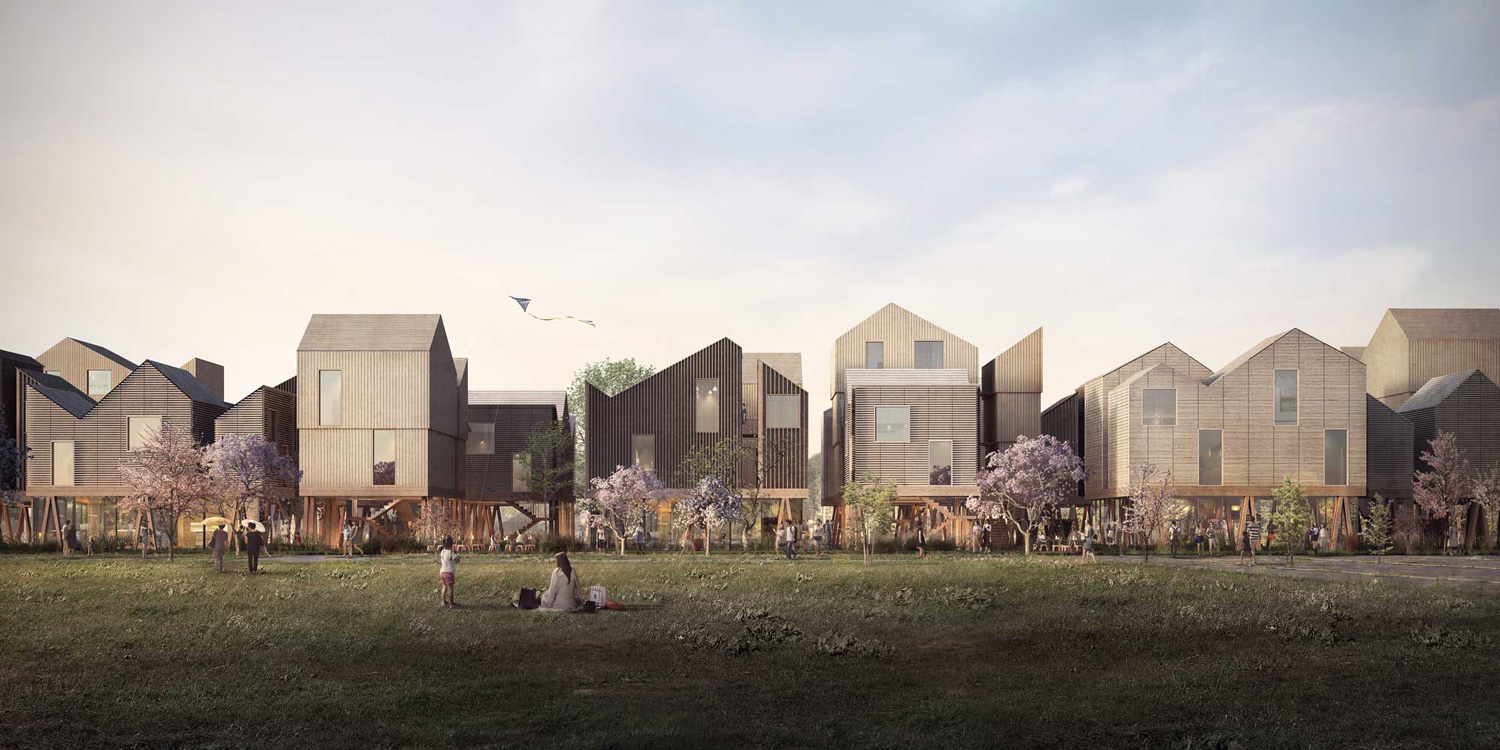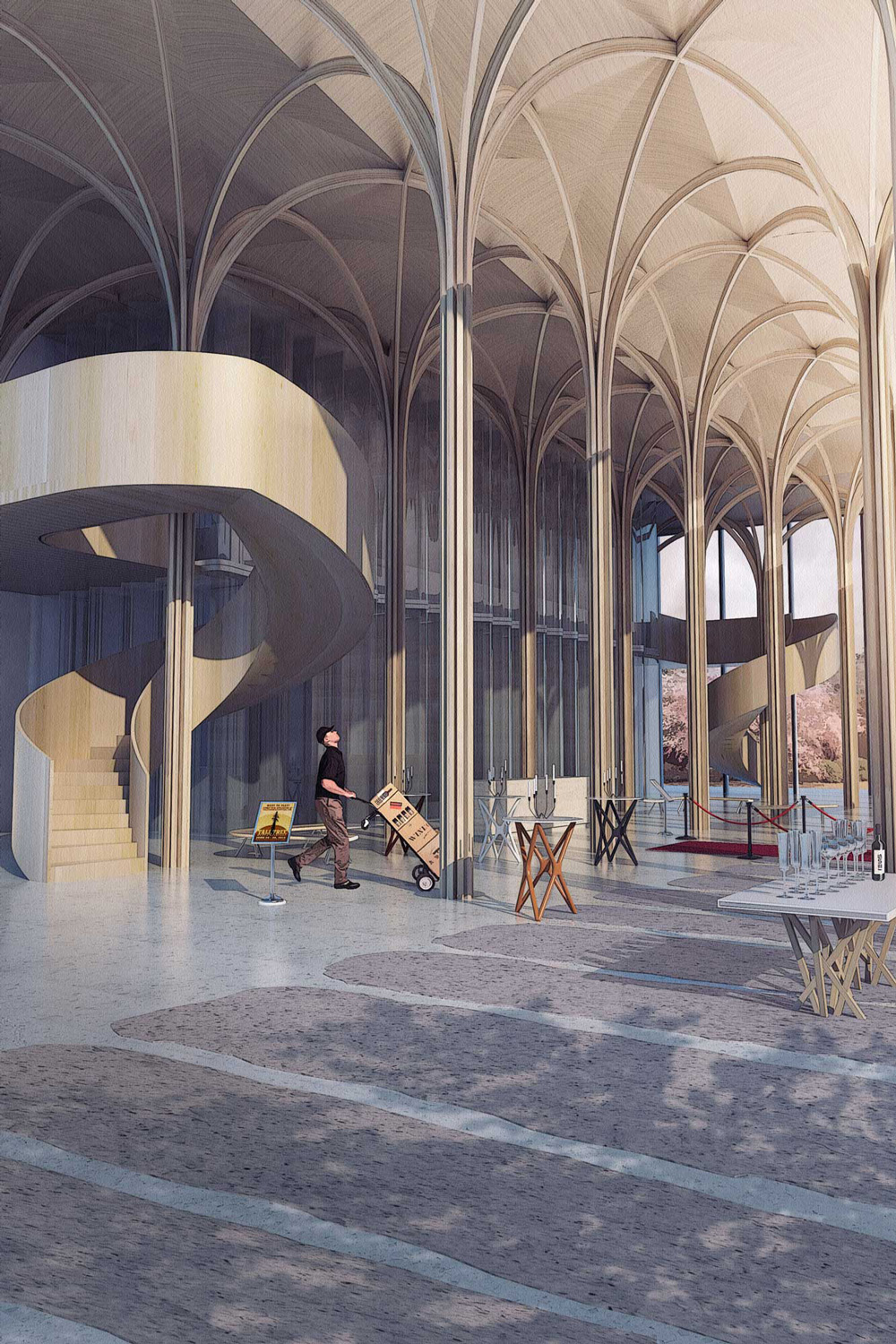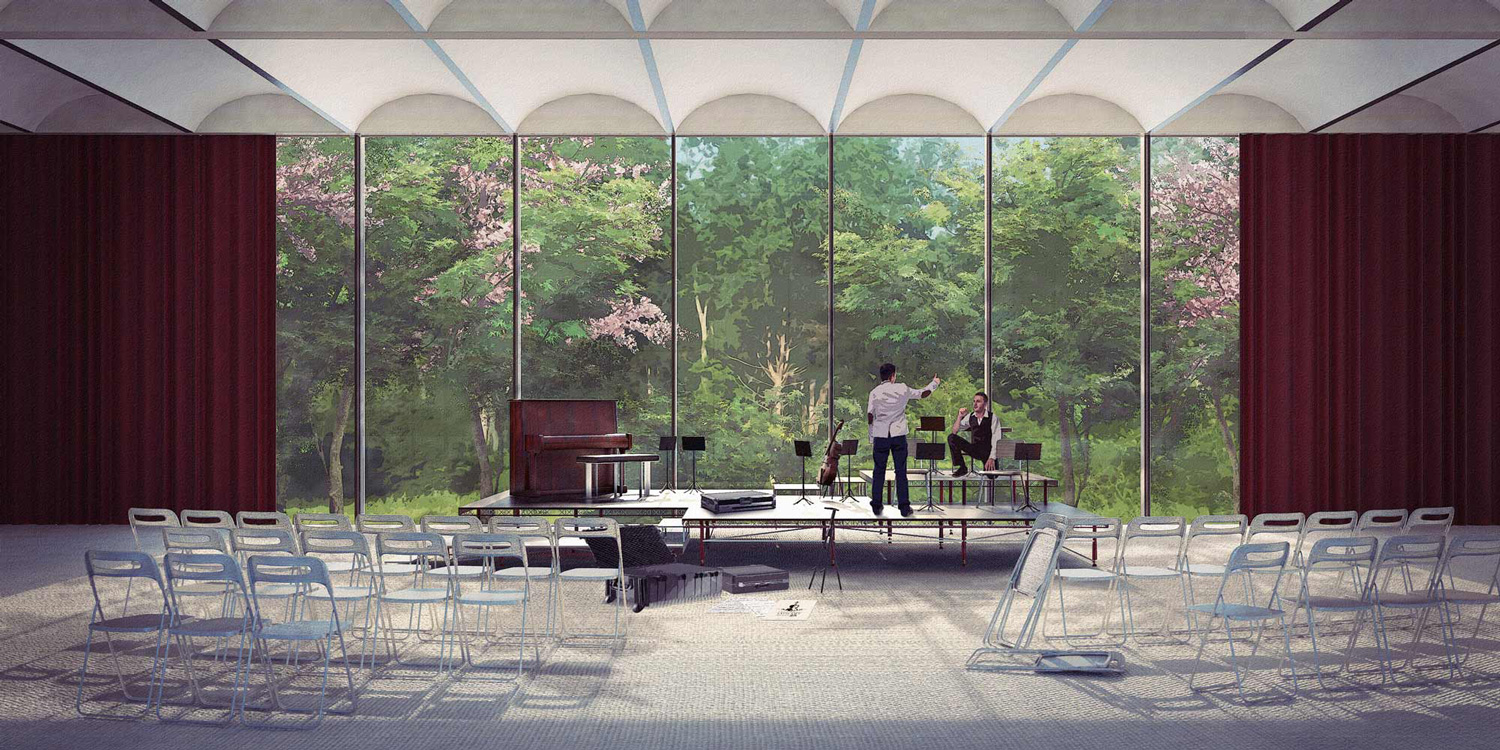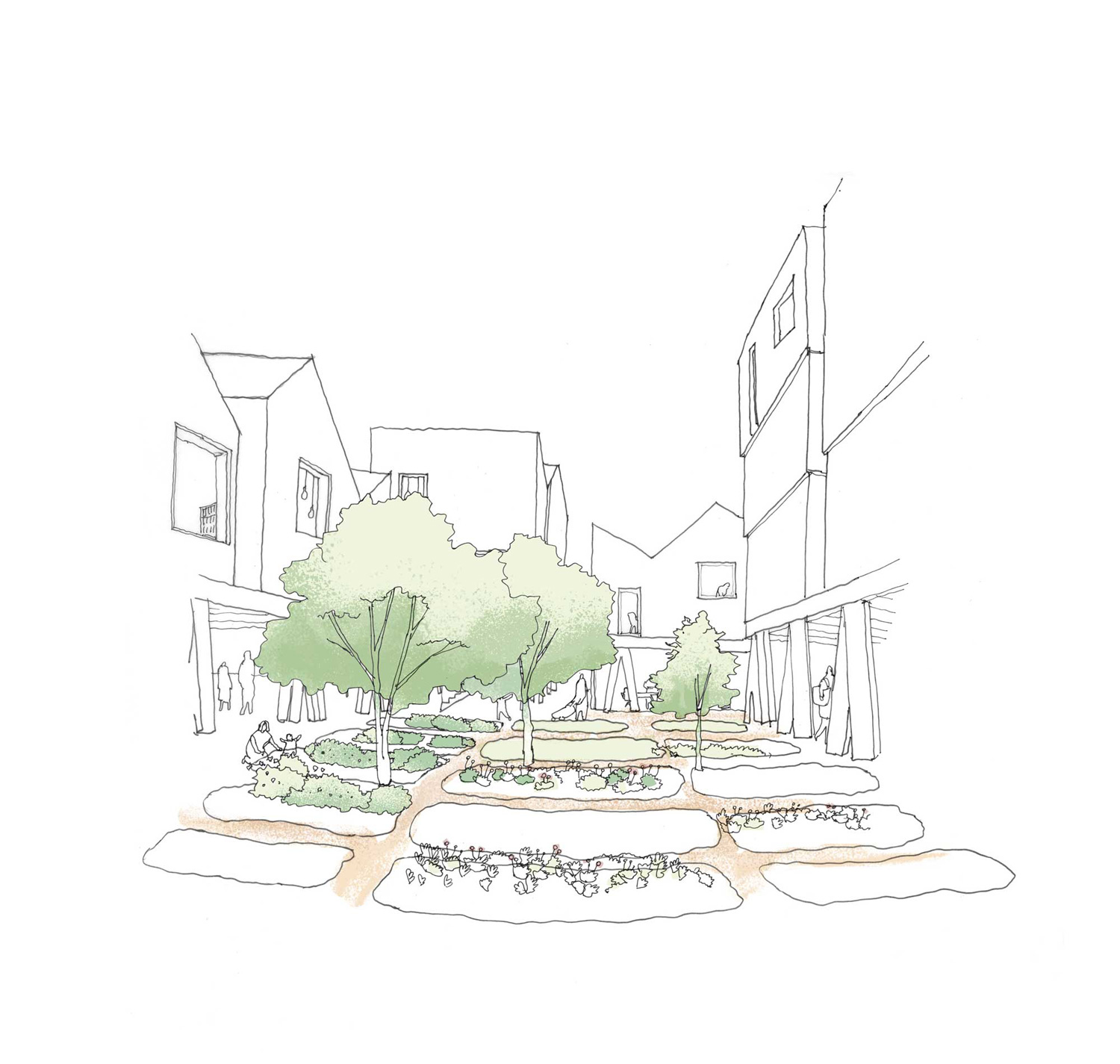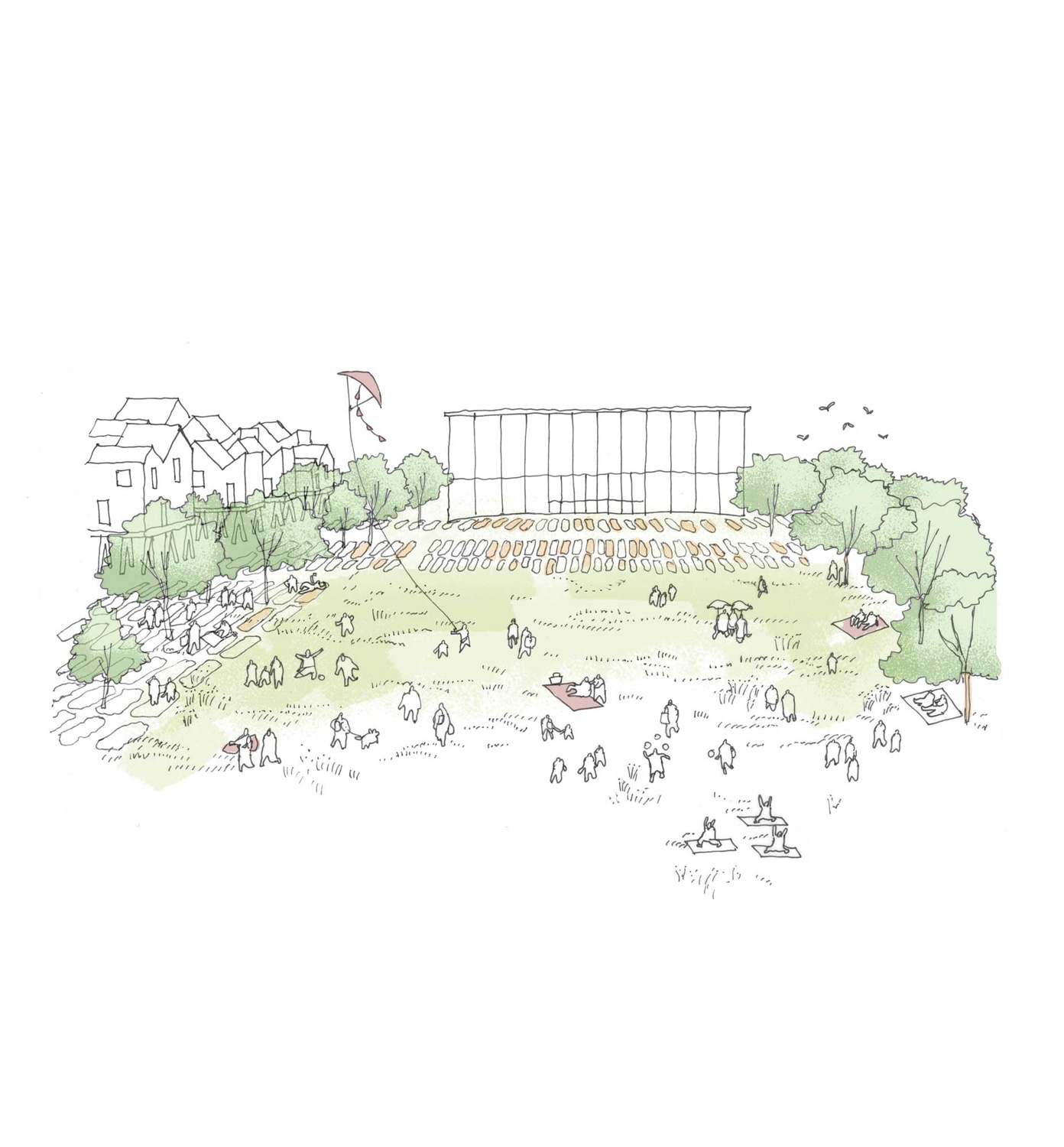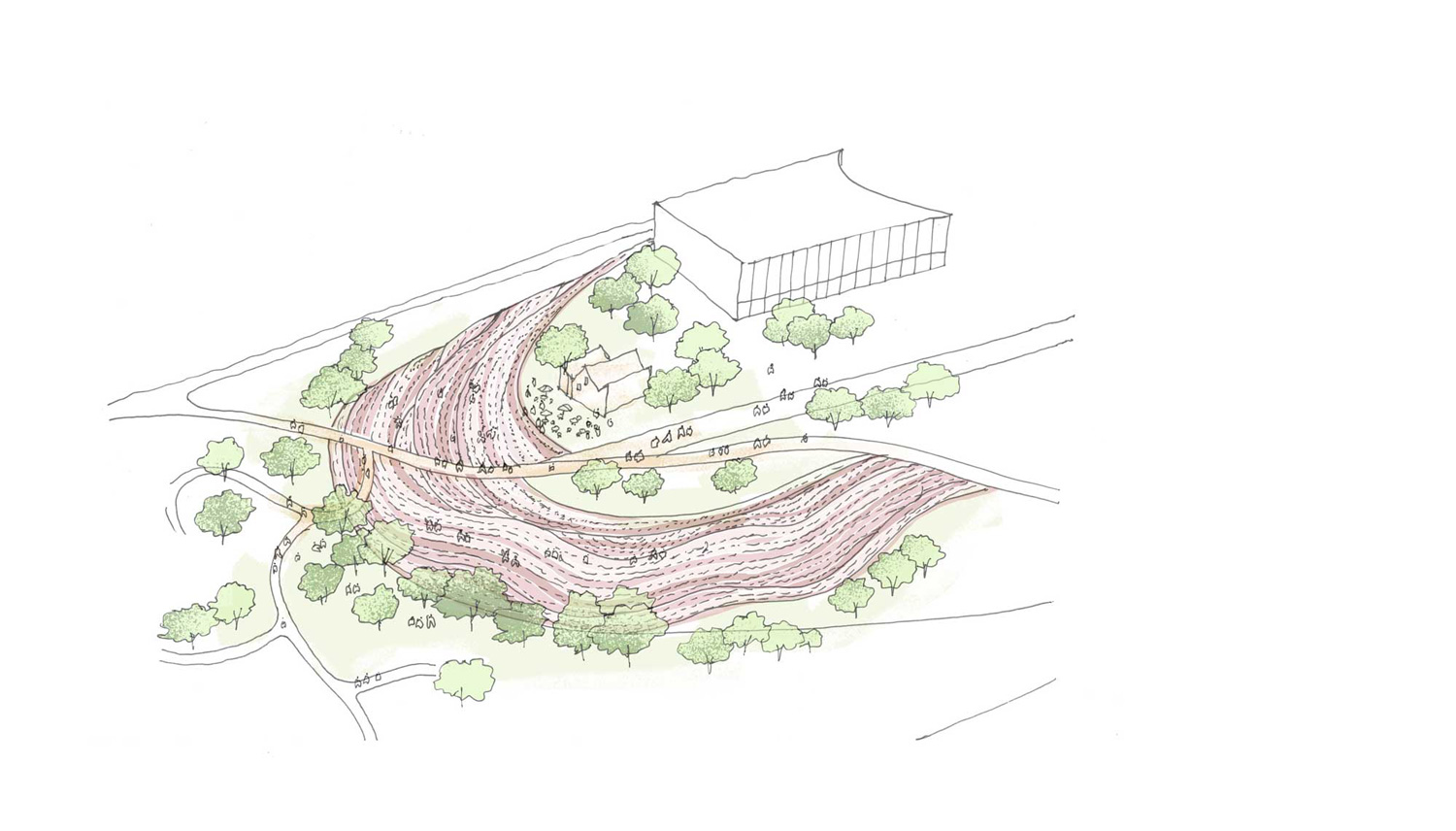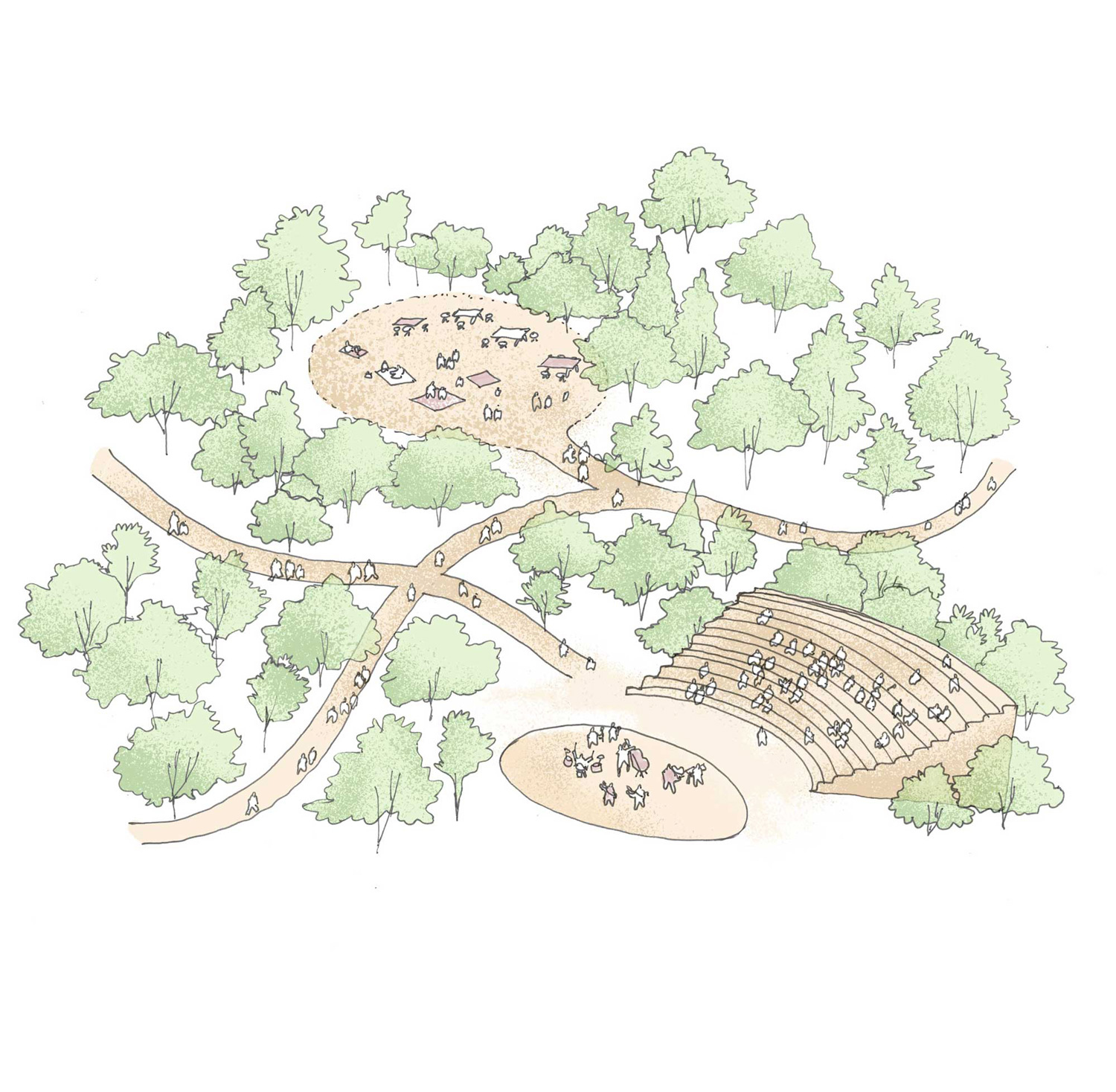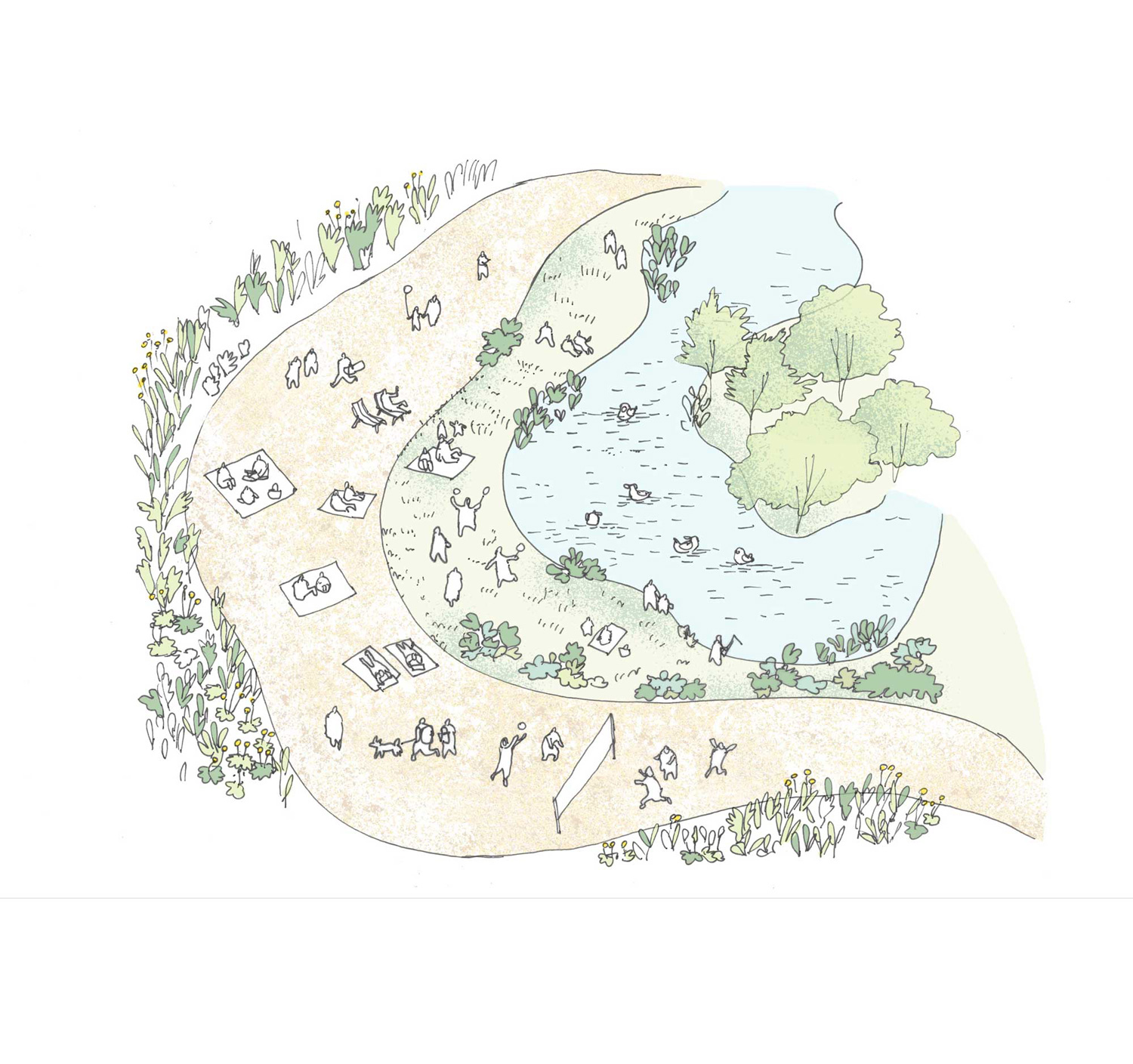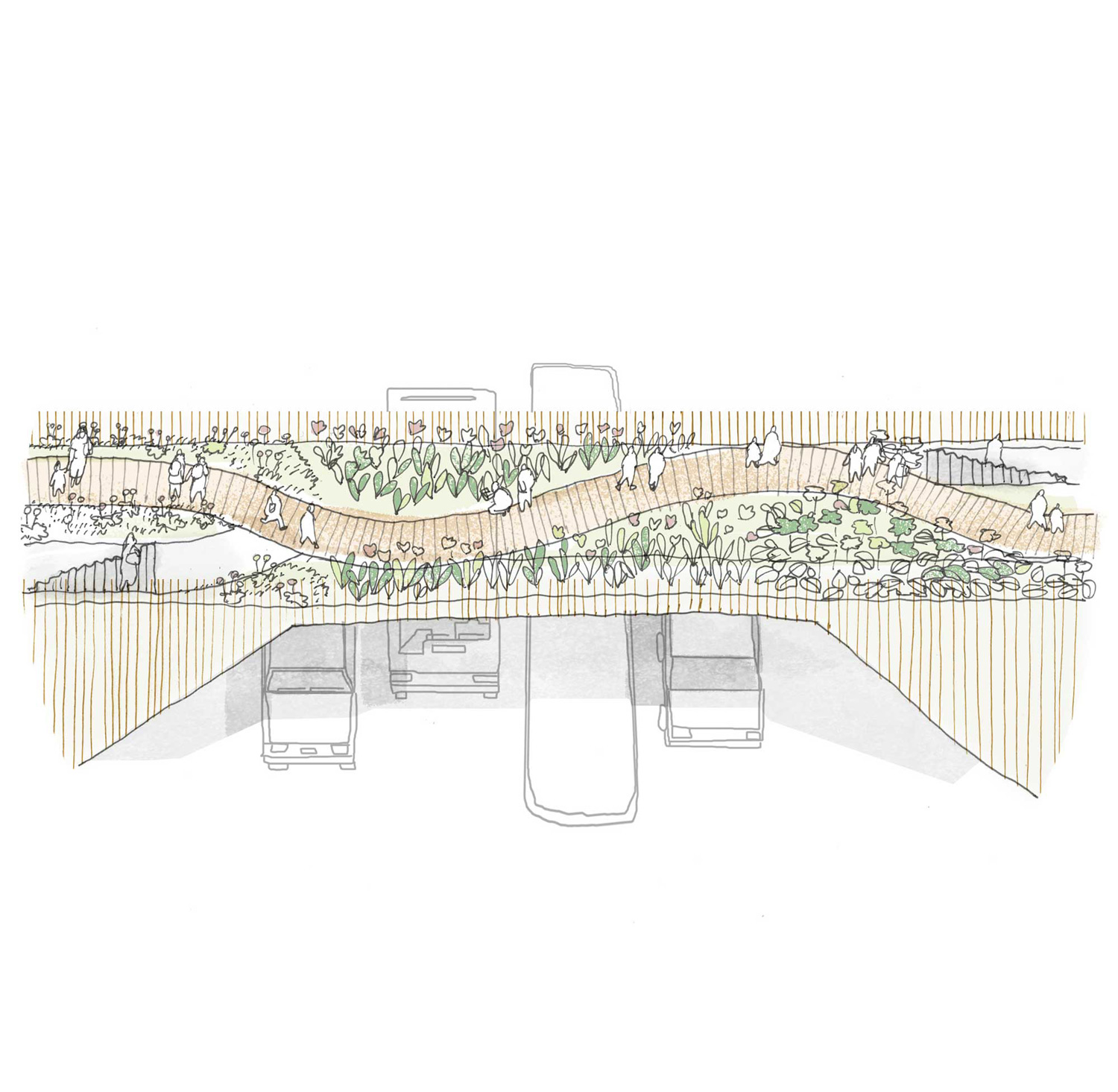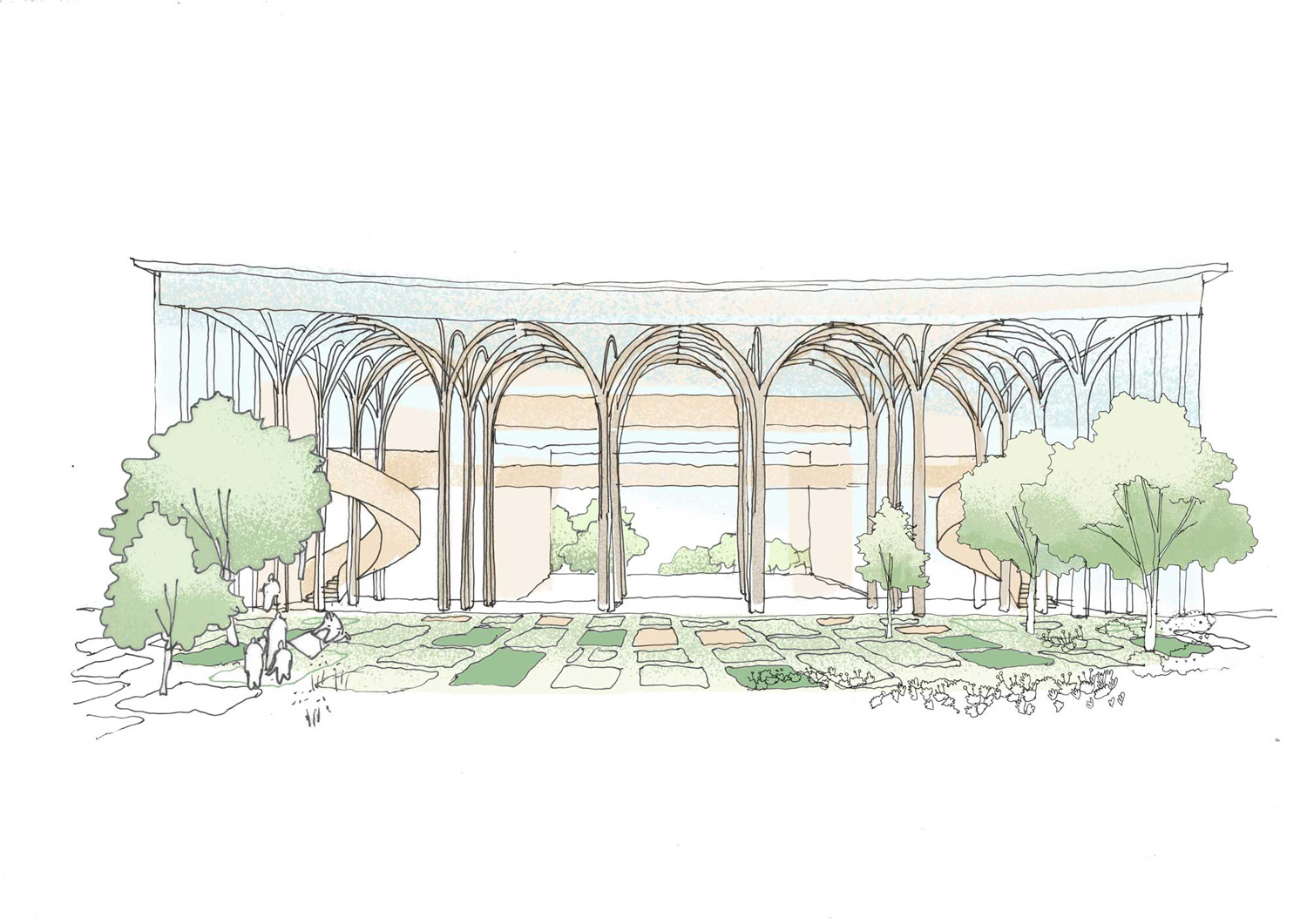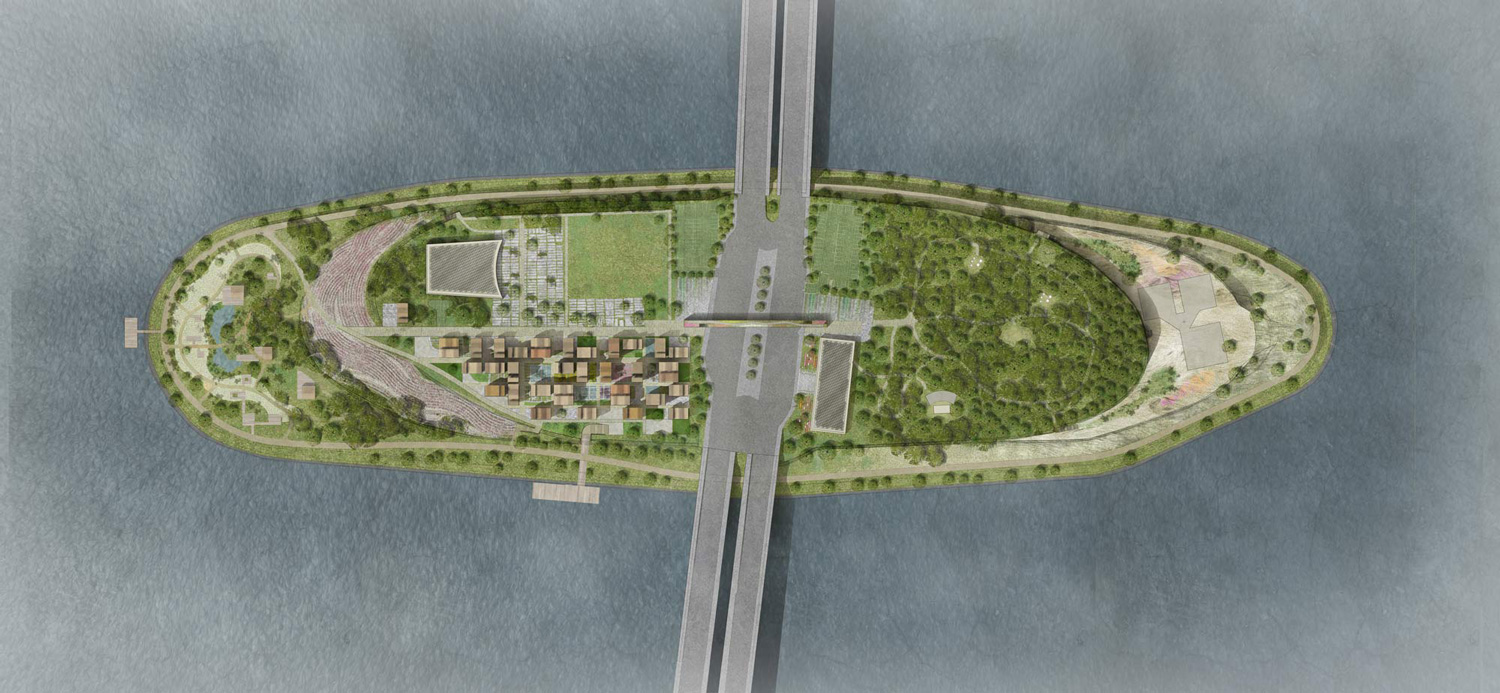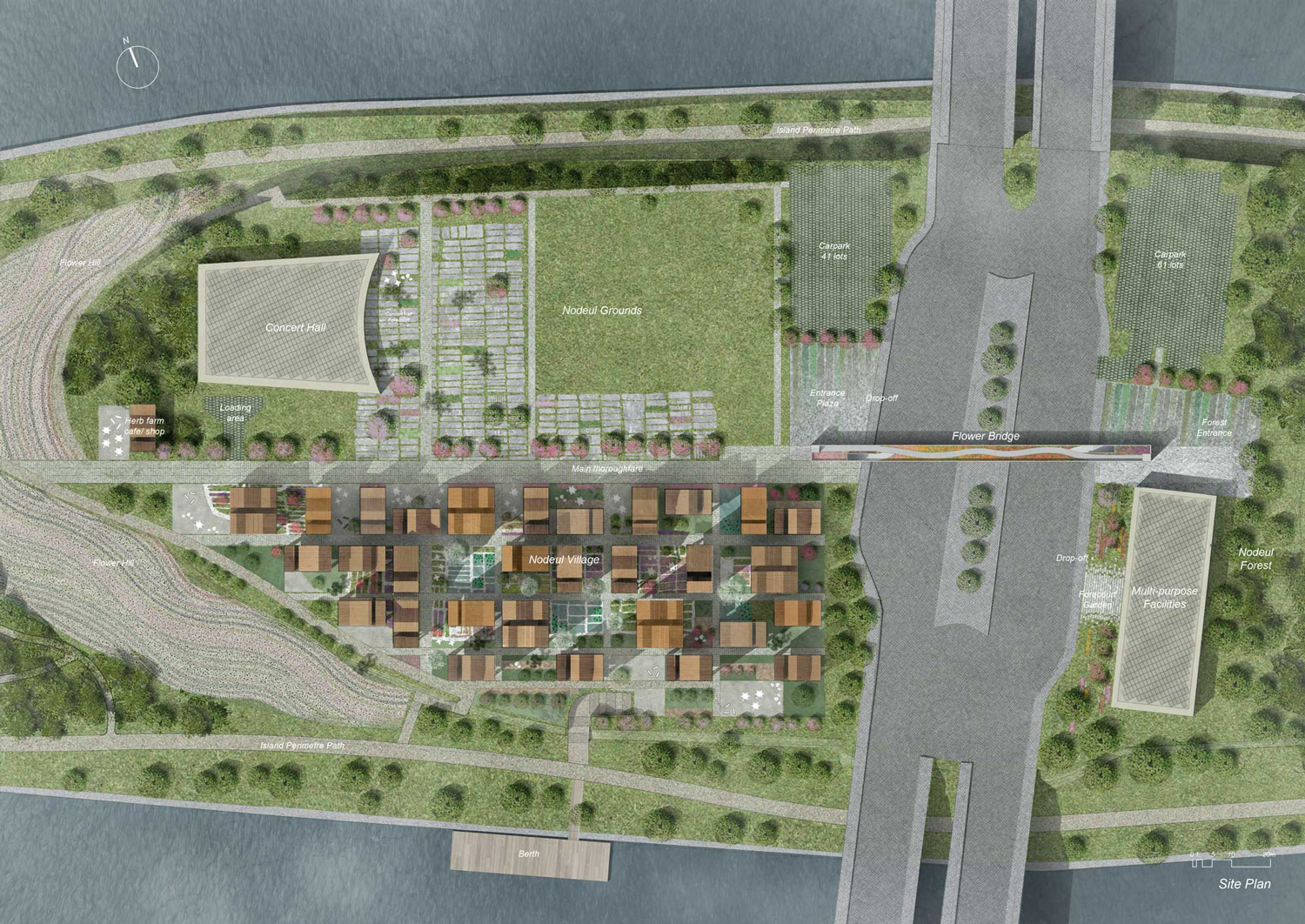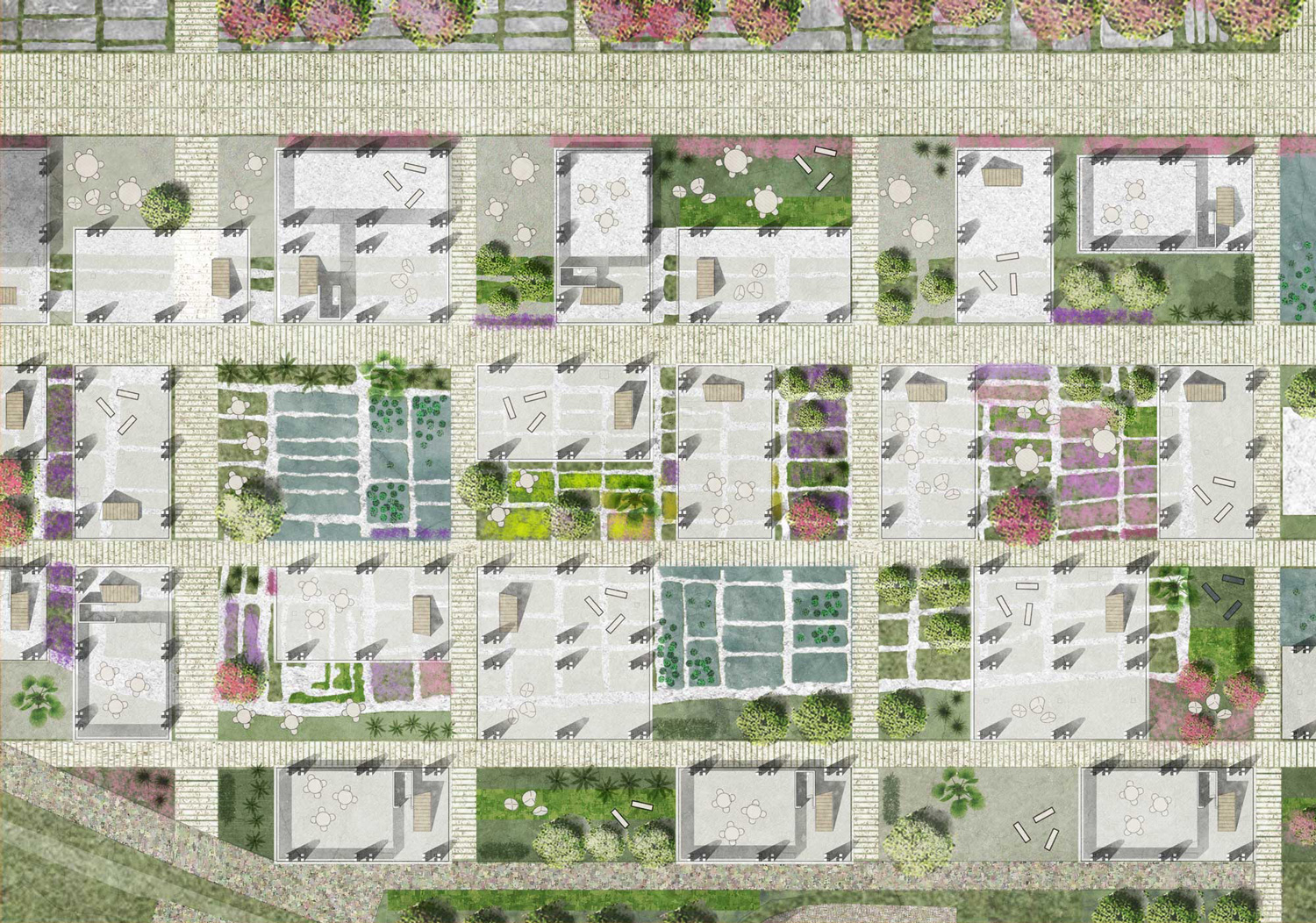2253-SER-SEL.KR-2017
Client: Seoul Metropolitan Government
Status: Competition (2017)
Location: Seoul, South Korea
Coordinates: 37.5177627, 126.9596670
Climate: Continental, Temperate
Materials: Glass, Wood
Environments: Park, Riverside
Visualizer: Studio
Scale: Large
Types: Cultural, Cultural center
A wild island in a metropolis, a piece of nature cast off from the city, floating in the dreams of its dwellers. This is how we envision Nodeul Island’s past and future: a place where urban activities are woven into natural landscape; where fragile traces of history echo in its terrain and infrastructure.
Nodeul Island’s unique character is formed by the melding together of the delicateness of nature and the immensity of infrastructure, a fusion that is further tempered by the passing of time. Our efforts, therefore, focuses on preserving these spatial memories and at the same time creating new visions for the future. We do this by making visible these traces of history, thereby translating them into permanent reminders of time past for future generations of city dwellers.
In our proposal, the new landscape is an accumulation of found and preserved fragments of Nodeul Island’s old allotment farms. The shapes of the individualized gardening beds are an intimate reflection of the different gardeners that once tended to these plots, and the outlines of these beds will be preserved in permanent casts.
These casts form new garden beds and pathways that are full of character. Together they add a meaningful layer to ponder and contemplate as one experiences the space. The preservation of Nodeul Island’s past is also expressed in a variety of other ways – cracks in the old retaining walls are filled to accentuate the fissures while preserving the rough texture of the industrial era infrastructure; flowers are planted in patterns which emphasise the contours of the existing topography; and the floors of the new buildings bear traces of the landscape that lay before it.
The logic behind the design of the commercial and office spaces are also developed in the same vein, allowing traceable changes through time and use. These spaces are treated as allotments and have a structural framework that allows incremental additions through the participation of local citizens, allowing the built landscape to adapt to its inhabitants according to changing needs. It is an architecture that promotes involvement and rewards the engagement of its users.
We treat architecture as an extension of the landscape, and it should not set itself apart or dominate nature. Our buildings touch the ground lightly, are open and transparent, and merge with their surroundings. Nature defines and influences the aesthetics of our buildings, and the architecture gives back by acknowledging the natural landscape with panoramic views from within. In this way, our proposal constantly oscillates between architecture and nature, building and landscape; the hard and soft, the enclosed and open.

